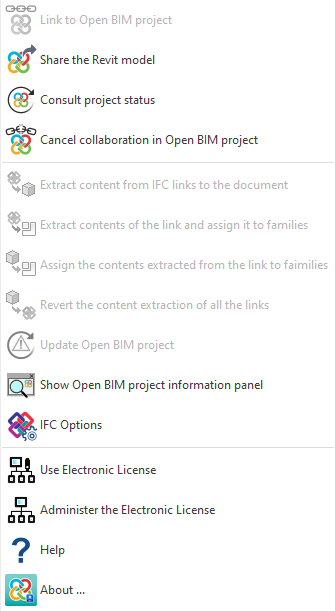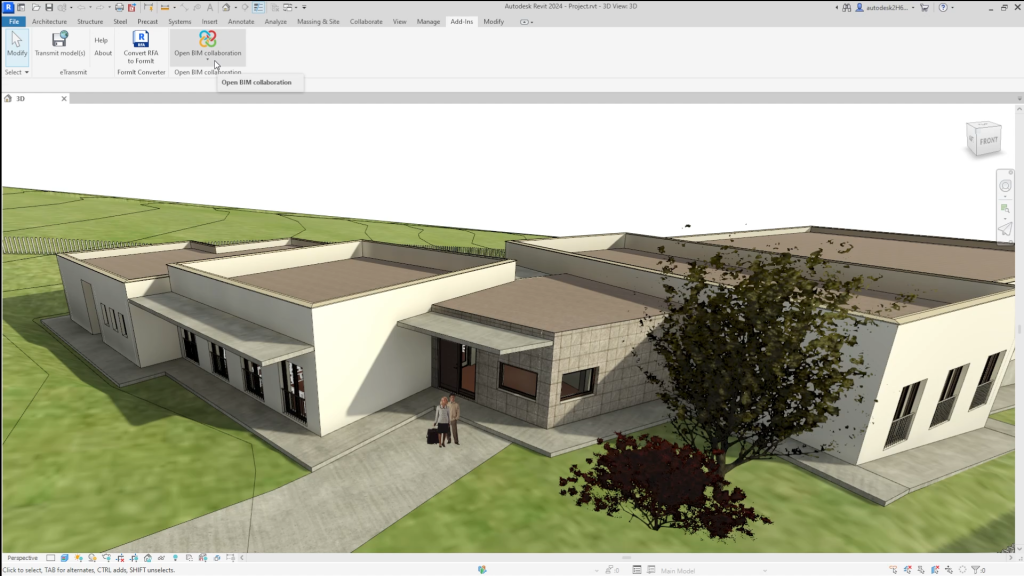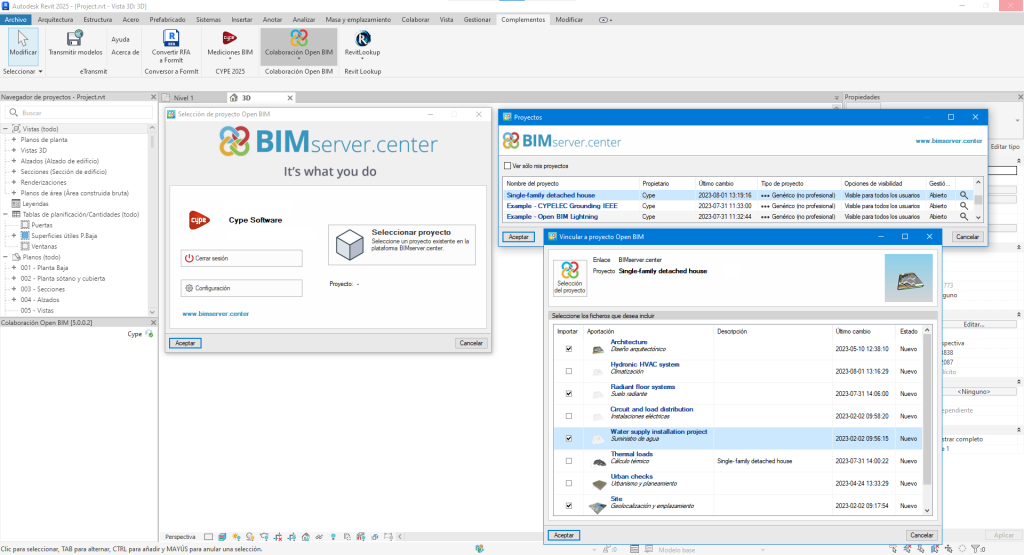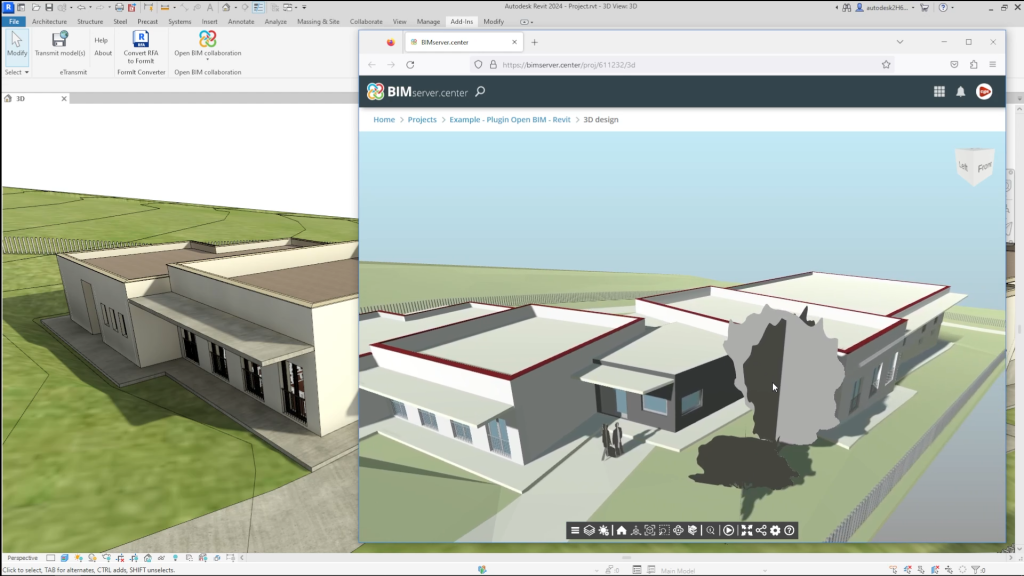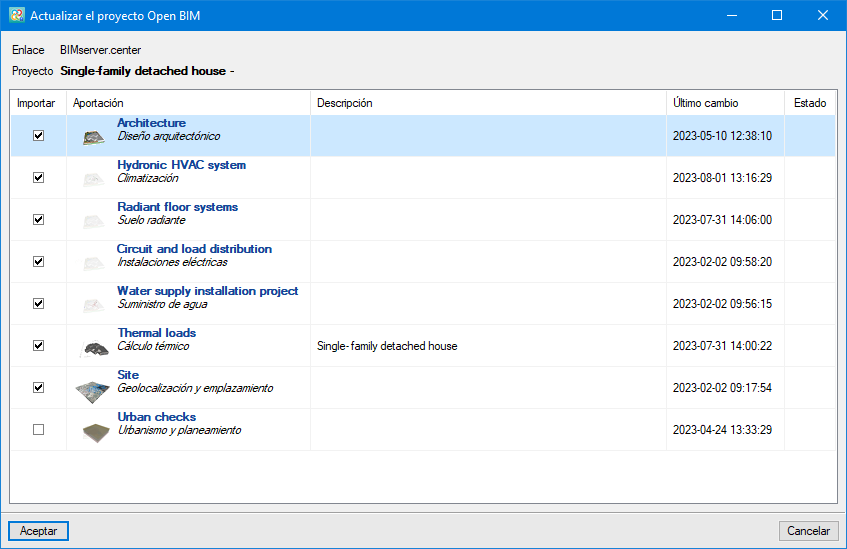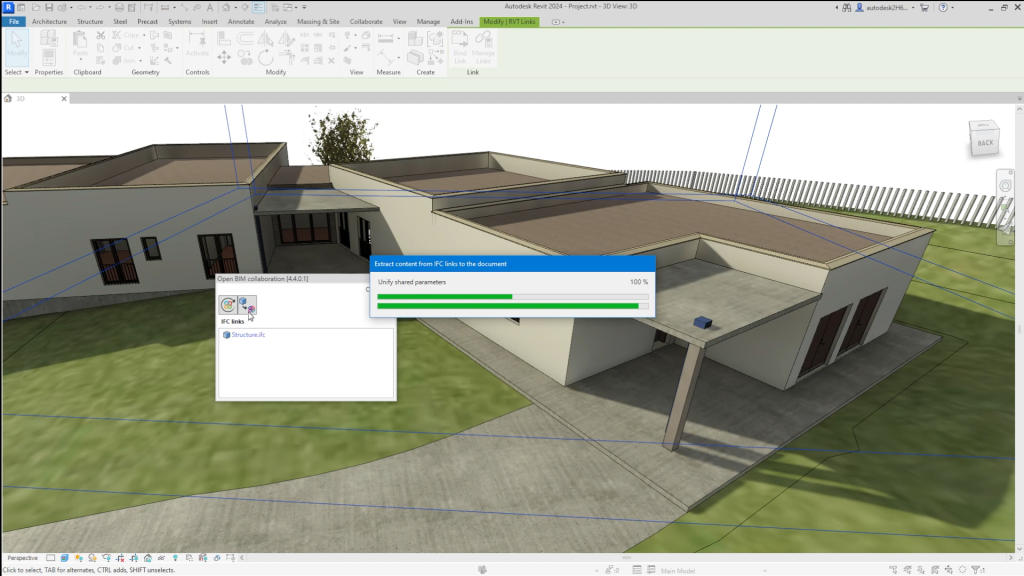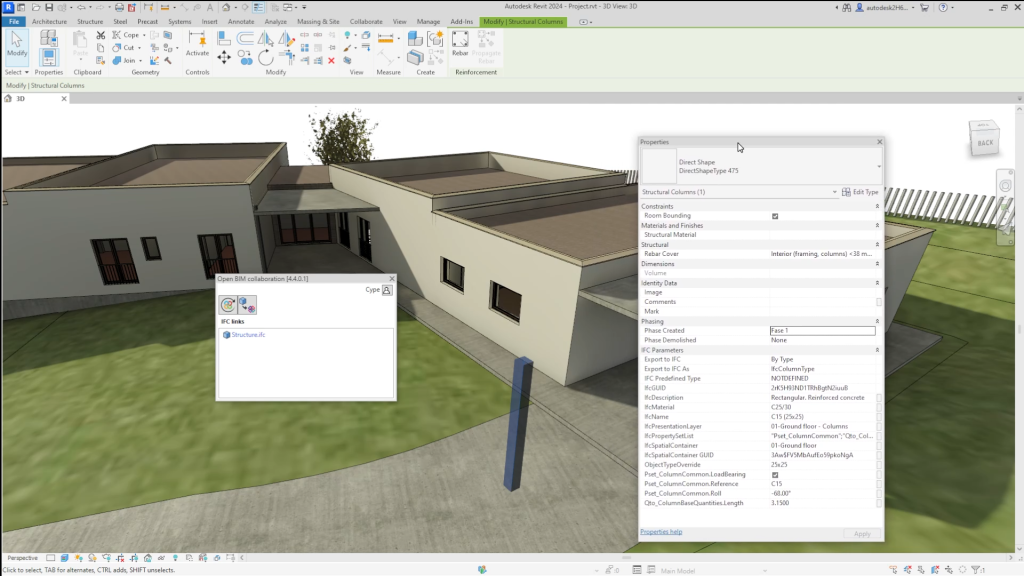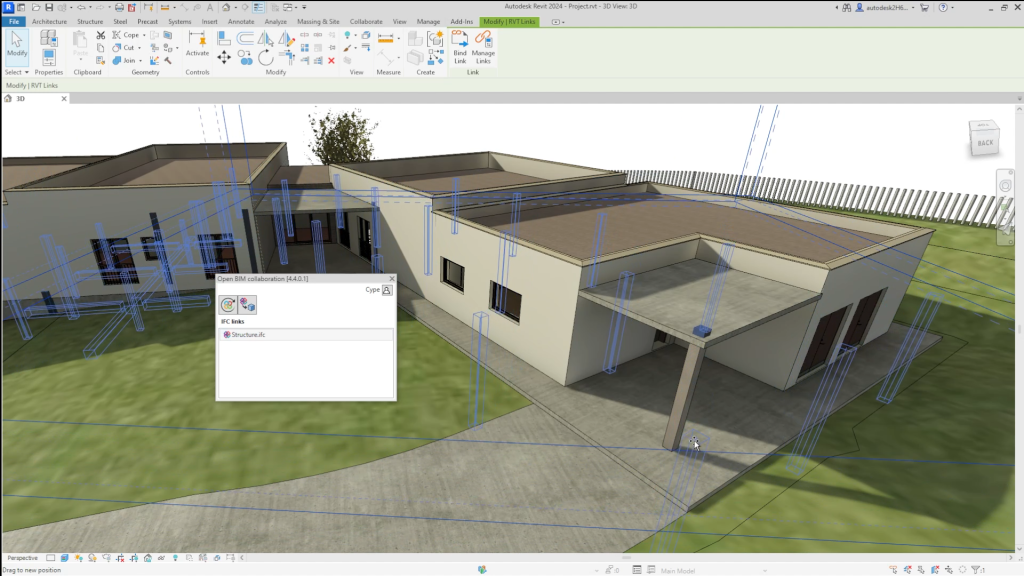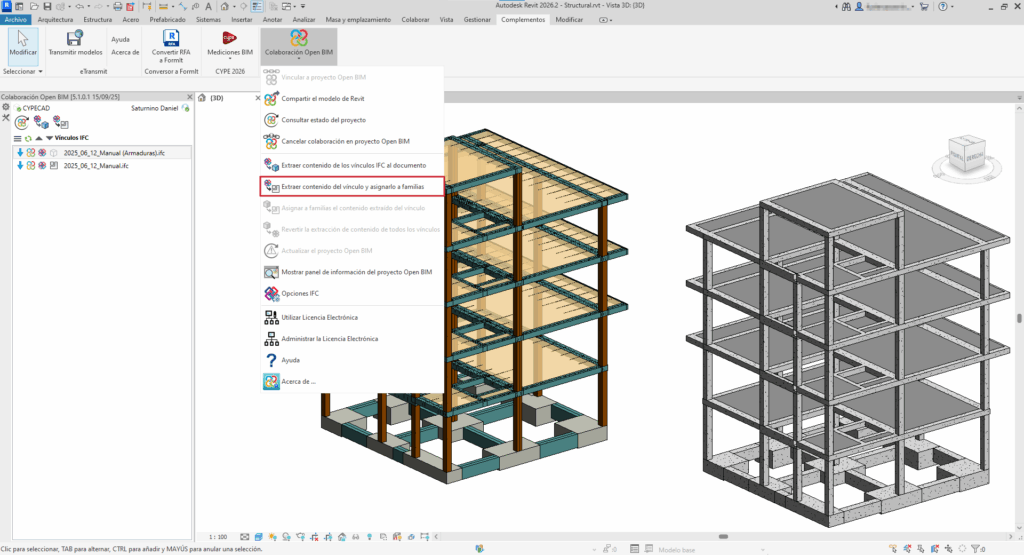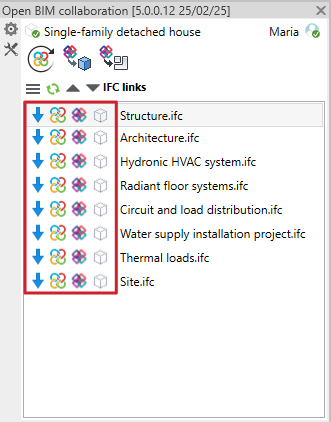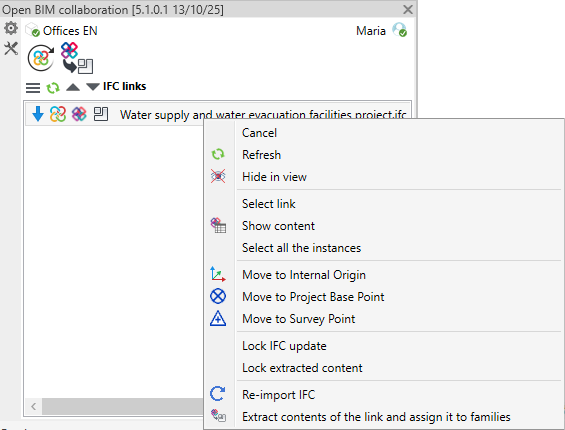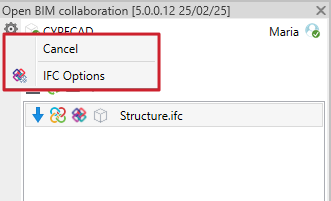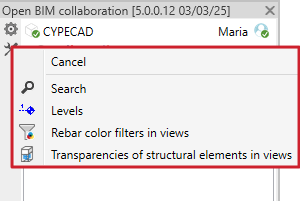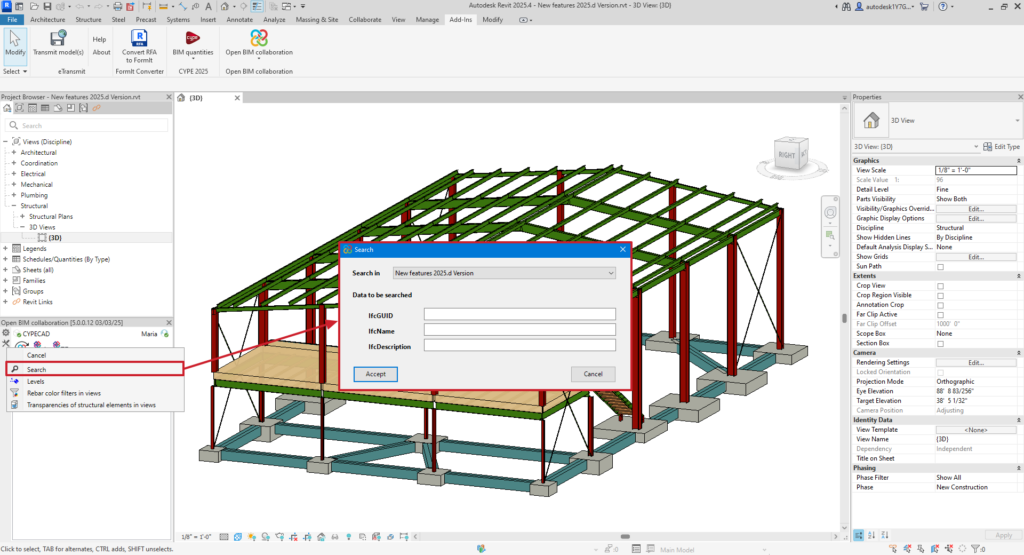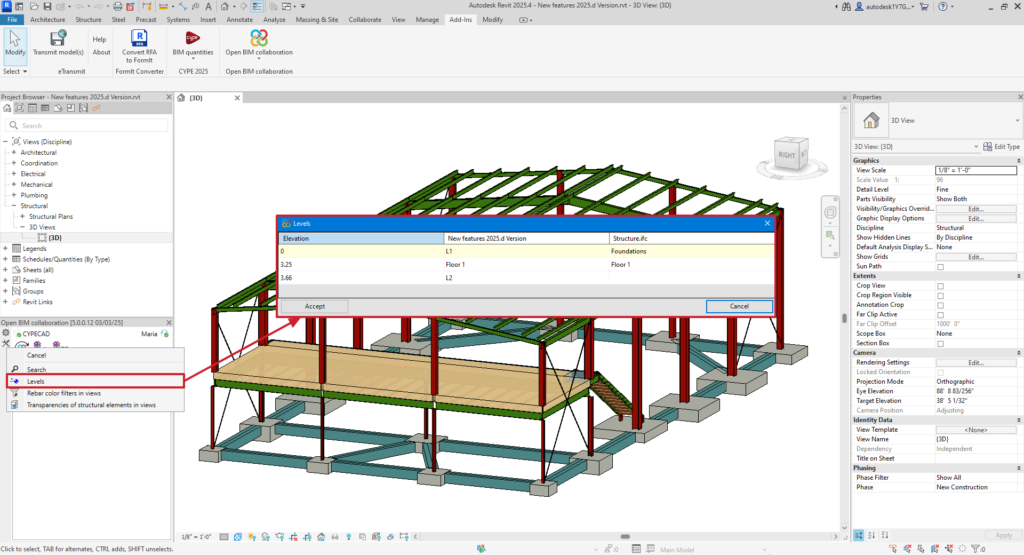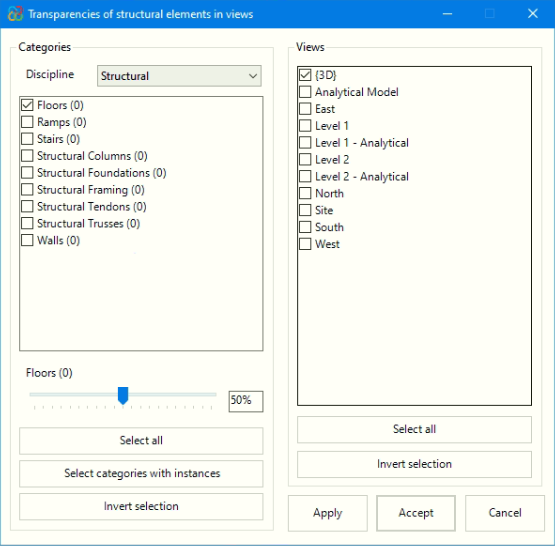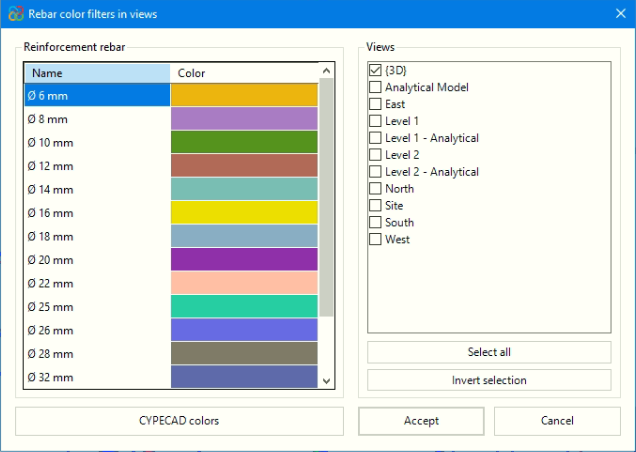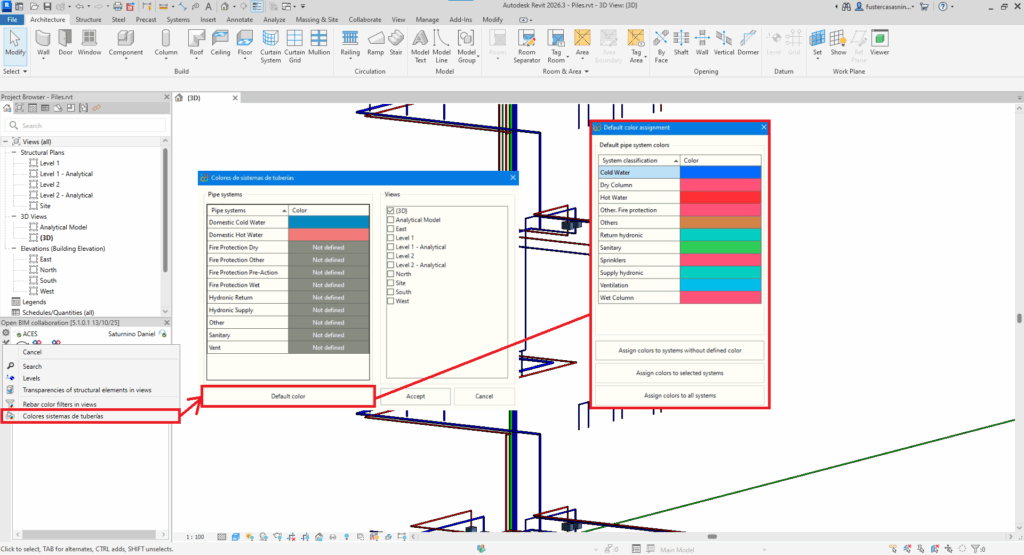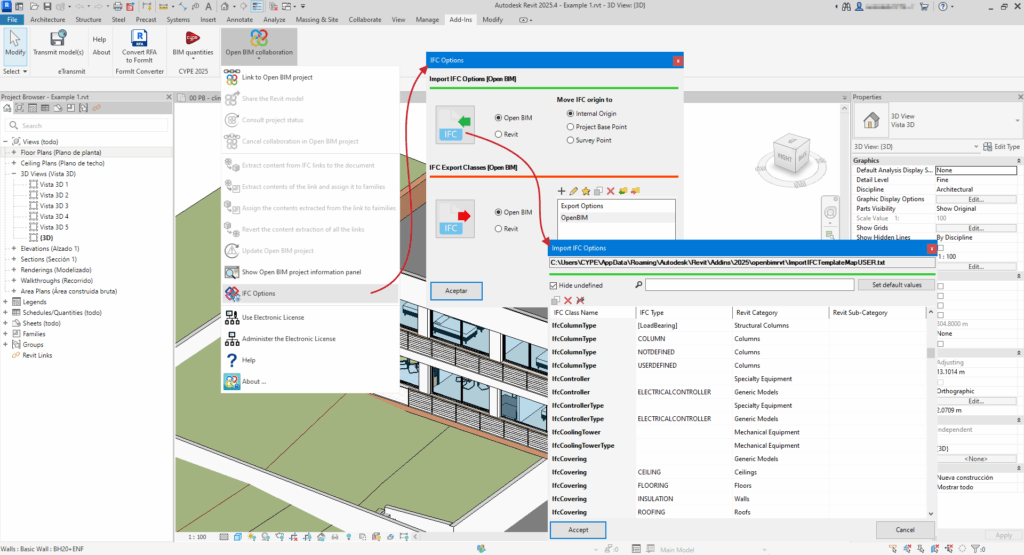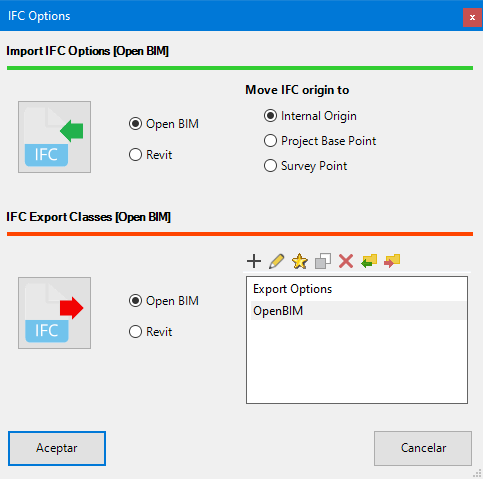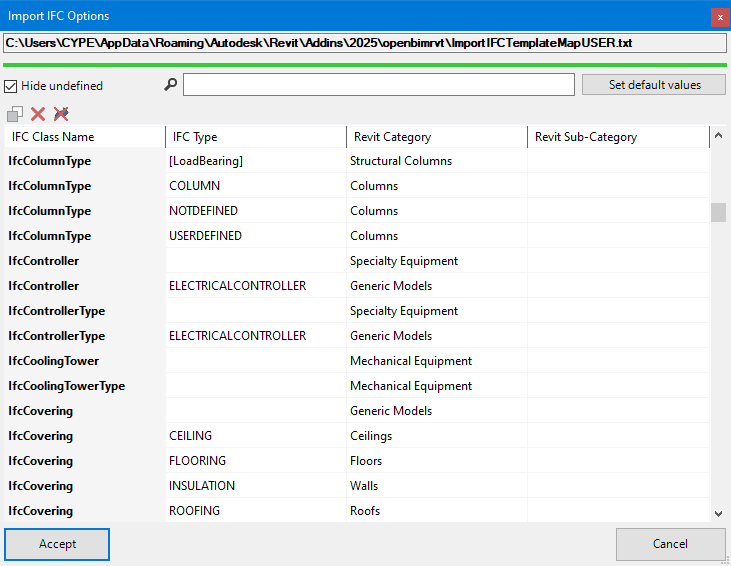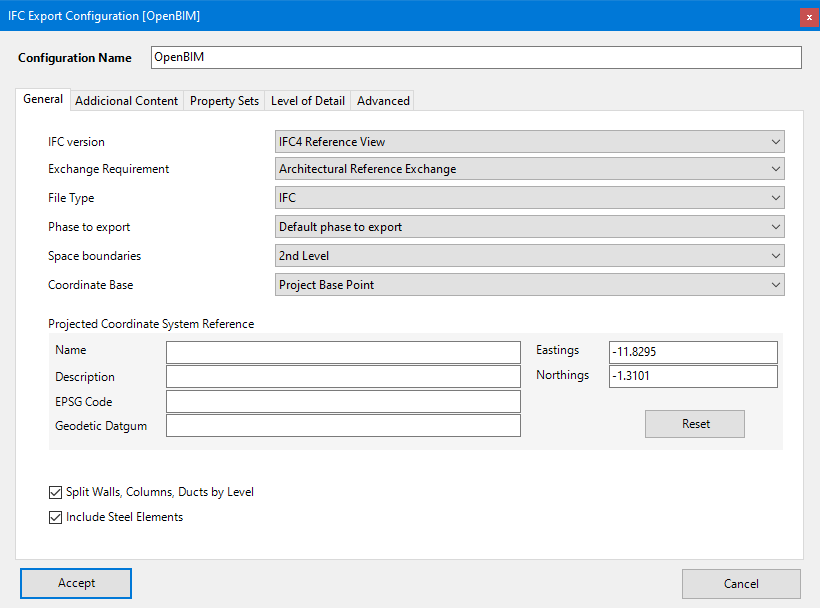Introduction
CYPE is committed to collaborative, multidisciplinary and multi-user workflows that integrate the different specialists involved in a project. In this sense, many applications from other software manufacturers can participate in this project development system by exchanging information through files based on open standard formats (IFC, FIEBDC-3, glTF, JSON, etc.).
With the Open BIM - Revit Plugin, any Autodesk Revit user can integrate their project into the BIMserver.center platform and benefit from all the advantages it offers. This includes: the representation of BIM models in augmented reality and virtual reality; the control of updates and incident management; the management of project participants; and the connection with different Open BIM applications, including CYPE tools.
Furthermore, the plugin doesn't only facilitate collaborative integration and information exchange, but also incorporates tools for generating native Revit elements from IFC models, which expands the possibilities for editing and making the most of the model.
Plugin Open BIM - Revit
In the "Add-ins" tab, in the "Open BIM collaboration" panel in Revit's main toolbar, there are options available for the Open BIM - Revit Plugin.

There are three separate sections in the drop-down menu.
The first section contains the tools needed to synchronise the project with the BIMserver.center platform.
- Link to Open BIM project
- Share the Revit model
- Consult project status
- Cancel collaboration in Open BIM project
The second section contains tools for managing the content of IFC links.
- Extract content from IFC links to the document
- Extract contents of the link and assign it to families
- Assign the contents extracted from the link to families
- Revert the content extraction of all the links
- Update Open BIM project
- Show Open BIM project information panel
- IFC options
The third section covers license management and the help and information available.
- Use Electronic License
- Administer the Electronic License
- Help
- About...
Open BIM collaboration
With the “Open BIM - Revit Plugin”, users can start an Open BIM project directly from Revit. This way the Revit model can be communicated with the CYPE models, thus achieving two-way collaboration in real time between the different disciplines of the project and Revit through the exchange of IFC files. This improves communication between Revit and the set of specialised CYPE tools, optimising the BIM workflow.
Linking to an Open BIM project
With the “Link to Open BIM project” tool, users select the BIMserver.center project that they want to connect to. Once the project has been selected, the different contributions included can be incorporated to extract information or coordinate with the Revit model.
Sharing the Revit model
With the “Share the Revit model” tool, users can extract the information from the Revit model by generating files in standard IFC format to then incorporate it into the project on the BIMserver.center platform to which it is linked.
Users can select a local destination for the project or use BIMserver.center to share the project with other collaborators.
Once the project is created, an IFC file of the current model is generated.
| MMore information: |
|---|
| The possibility of working in collaborative environments by storing central models both on third-party platforms and in Autodesk's cloud, Autodesk Construction Cloud, has been implemented. This ensures the correct functioning of the plug-in's features and tools in a collaborative work environment. |
Checking the status of the project and updating the Open BIM project
With the “Consult project status” tool, users can check for possible changes in the project's IFC files.
The program reports any changes that have been generated in the projects of the different disciplines and allows users to decide whether they wish to update the project information.
IFC files that still need to be linked can be selected or some of the previously linked IFC files can be deleted.
Cancelling the Open BIM project collaboration
With the ”Cancel collaboration in Open BIM project” tool, the messages concerning the collaboration with the Open BIM project are deactivated and all links to IFC files are optionally removed.
Extracting content from IFC links to the document
With the “Extract content from IFC links to the document” tool, users can convert the linked IFC model into a set of individual objects (DirectShape), which makes it possible to delete or modify the position of these objects and, alternatively, to modify the parameters of the associated elements. Furthermore, the linking to native Revit categories allows them to be filtered, tagged and listed in tables.
For the analysis and documentation of models, the conversion process adds a significant advantage: bringing the shared parameters together. Linking IFC models to a Revit project requires the association of individual IDs to each IFC property or attribute. The consequence of this process is that the same attribute or property receives different IDs in different links, requiring the definition of the specific shared parameter file for each operation to be performed on each of the linked models. By extracting the content of the IFC links, this tedious operation is no longer necessary; the plugin takes care of joining the shared parameters so that users are not forced to maintain and manage a set of shared parameter files (one for each linked IFC model). This makes the process transparent to the users, who simply have to locate the attribute or property to be listed by its name.
The conversion process is fully reversible. Users can either “Extract content from the link to the document“ or “Revert the content extraction of the link“. This synchronisation of the different models to the project can be maintained in BIMserver.center and this operation can be defined for the federated set of models or individually for each model. The status of each link shall be shown with an icon and a distinctive colour.
Generation of native Revit elements based on a IFC
The "Generation of native Revit elements based on a IFC" module of the Open BIM - Revit Plugin can convert structural IFC links, reinforcement and/or piping systems (included in a BIMserver.center platform project) to native Revit elements through family assignment.
The features of this module are centralised in the "Extract link content and assign to families" option in the "Open BIM Collaboration" panel in Revit.
For more information, please refer to the following links:
Open BIM project information panel
When linking to a project, this panel shows each of the links, and the status of the links using the following icons:
- Link status
Shows whether the link is loaded or unloaded. - Original IFC status
Shows the status of the IFC located in the ‘bim_projects’ folder. - Local IFC status
Shows the status of the IFC located in the local directory folder where the project is saved. - Content status
Shows the status of the extracted contents (DirectShapes) of each of the links.
When you right-click on a link, a context menu appears that allows you to perform the following actions:
- Cancel
Closes the context menu without performing any action. - Refresh
Updates the status of the IFC link in the view, displaying any recent changes without the need to manually re-import it. - Hide in view
Completely hides an IFC link in the active view. To display it again, simply run the tool on the same link. - Select link
Select the IFC link in the Revit model, making it easier to locate and manipulate. - Show content
Opens an information panel displaying all the information on the IFC entities contained in the link. This panel is read-only and is for informational purposes only. - Select all the instances
Simultaneous selects all instances generated from an IFC link, facilitating their management and bulk editing. - Move to Internal Origin
Moves the location of the IFC link to align it with the internal origin of the Revit project. - Move to Project Base Point
Adjusts the position of the IFC link to match the project's base point in Revit. - Move to Survey Point
Relocates the IFC link using the project recognition point as a reference. - Lock IFC update
Prevents the IFC link from updating automatically when changes are detected in the original model, maintaining its current status in Revit. - Lock extracted content
Prevents already extracted elements from being accidentally modified or updated, ensuring the stability of the converted model. - Re-import IFC
Forces the IFC link to update, replacing its content with the latest version available in the BIMserver.center project. - Extract contents of the link and assign it to families
Converts the contents of the IFC link into native Revit entities by assigning them to families, allowing you to work with them directly within the Revit environment.
On the left-hand side of the panel, a toolbar is located to improve the accessibility and organisation of the options.
It is structured in two main sections: "Configuration" and "Tools".
Configuration
The configuration section brings together options for customisation, conversion control and IFC data management.
- IFC options
Specific configurations can be defined for importing and exporting models in IFC format. This tool is explained in more detail in the IFC options section.
Tools
The tools section provides additional tools for visualisation, filtering and management of structural models, making it easier to navigate and analyse BIM content.
Information about the levels
It provides specific details on project levels, making analysis and organisation easier.
Apply transparencies to elements in views
This feature can be used to quickly modify the transparency level of different categories in the Revit model without having to access the visibility and graphics editor in the interface. It can also be used to freely select elements and define an editable transparency percentage for one or more project views.
In the categories section, the drop-down menu selects one of the disciplines available in Revit. By default, the discipline defined in the project template is loaded. Depending on the discipline chosen, different categories of the model will be displayed, along with the number of instances in each. Manual or global selections can be made using the buttons below. In the central area, a slider (TrackBar) allows you to define the transparency percentage to be applied, with values between 0% and 100%.
Finally, in the views section, select the model views to which you want to apply the previously defined transparency percentage.
Assign colour filters to reinforcement
This tool can be used to assign colours to the reinforcements according to their diameter. They can then be applied to the available views selected without the need to create a filter for each of them. The colours are customisable, and the colours used in the original design program are also available.
Assign colours for piping systems
This feature can be used to manage and customise the colours assigned to the different types of pipe systems available in the Revit model. It also makes it easier to identify systems without a defined colour and offers the possibility of applying a set of default colours in three different ways:
- Only to systems that do not have any colour assigned.
- To systems previously selected in the colour panel.
- To all systems available in the document.
In addition, you can manually modify the colours of each system by double-clicking on the corresponding cell, without having to use the default colour package.
The main dialogue box shows all the pipe systems in the project, while the default colours dialogue box shows the Revit system classification together with its assigned colour. Thus, when applying the default colours, the indicated colour will be automatically assigned to all systems belonging to that classification.
IFC options
With the "IFC options" tool, users can customise and optimise the conversion of objects to and from IFC. The availability of objects belonging to Revit's categories allows users to tag objects or to carry out analyses using planning tables, among other things.
This way, the BIM workflow of projects that are modelled in Revit and analysed with CYPE's programs is optimised, and it focuses on the possible detailed models generated from the applications belonging to the manufacturer's systems.
The "IFC options" feature complements Revit (accessible via File > Export > IFC > Modify configuration), and allows the import and export options defined in that setup to be overridden.
If "Revit" is selected in "IFC options", the plug-in uses the same configuration file as Revit. If "Open BIM" is selected, the plug-in suggests a mapping aligned with the needs of CYPE tools. This mapping can be modified, although it is already prepared to work seamlessly with CYPE tools without needing adjustments.
The "IFC import options" allow elements from IFC links to be assigned to native Revit categories, even though they cannot be modified while remaining within the IFC link. This enables the creation of filters and the use of schedules with those elements.
You can also select the point at which the origin of the IFCs from the selected contributions is inserted during import. Once loaded, these links can be moved to reference points in two ways:
- Moving them all at once,
- Moving each one individually.
Integration into the BIMserver.center platform
Many of CYPE's programs are connected to the BIMserver.center platform and allow collaborative work to be carried out via the exchange of files in formats based on open standards.
Please note that, to work on BIMserver.center, users can register on the platform free of charge and create a profile.
When accessing a program connected to the platform, the program connects to a project in BIMserver.center. This way, the files of the projects that have been developed collaboratively in BIMserver.center are kept up to date.

Licenses and related modules
CYPE programs are activated via electronic licenses which may contain one or more modules. The list of modules compatible with each program may vary depending on the product purchased and the type of license.
To consult the list of modules compatible with this program, go to "CYPE program modules".
Please note that the list of modules available in the license will depend on the product purchased.


